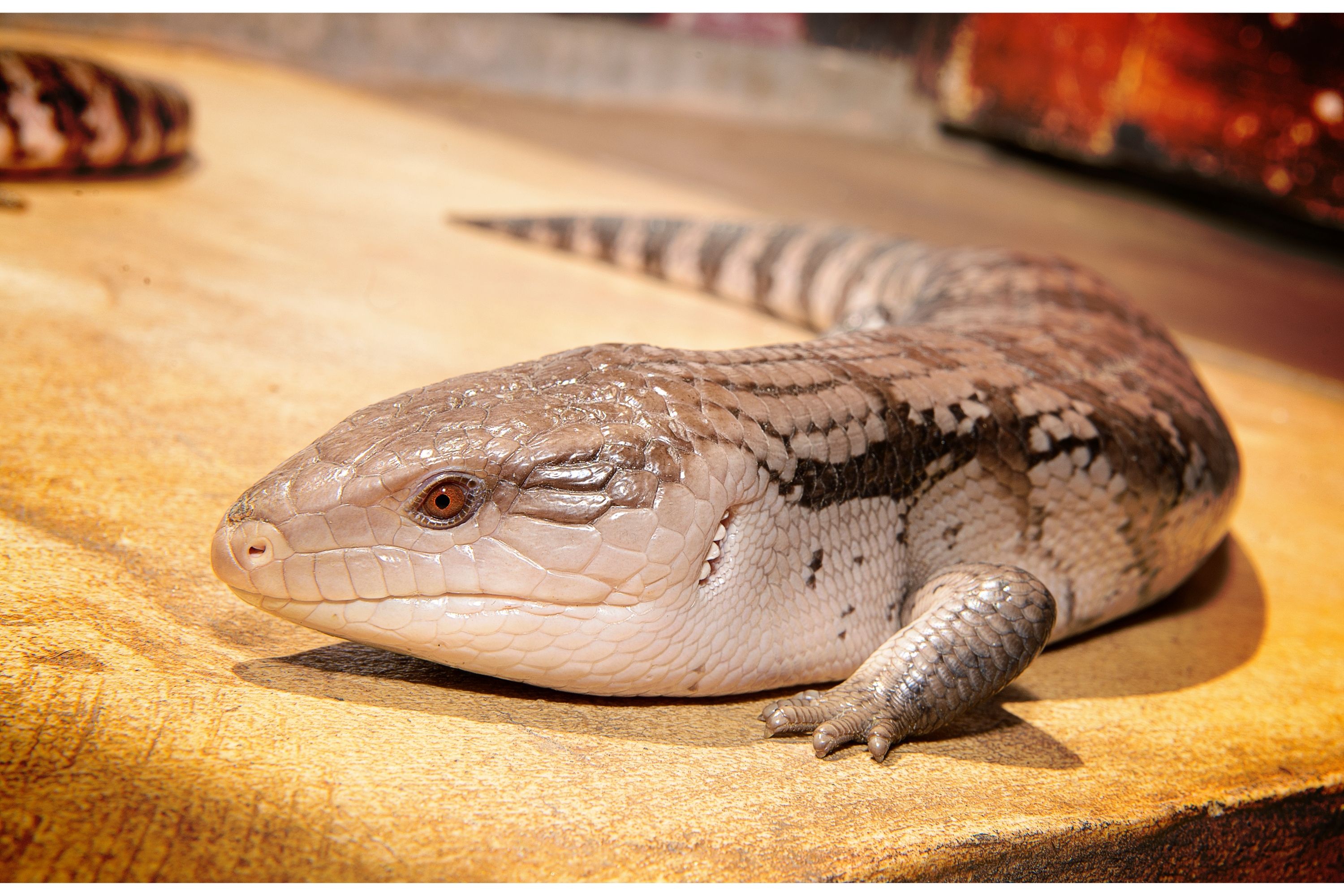Eastern blue-tongued lizard
(Tiliqua scincoides)

Description
Tiliqua scincoides (common blue-tongued skink, blue-tongued lizard, common bluetongue) is a species of skink. It is native to Australia as well as to the Tanimbar and Babar Islands in the Maluku Province of Indonesia. This is a large terrestrial lizard measuring up to 60 centimetres long and 1 kilogram in mass. It has a stout body and short legs. It is variable in color but generally has a banded pattern. The tongue is blue-violet to cobalt blue in color. Due to its characteristic blue tongue and its curious nature, it is a popular companion animal in Western countries. This lizard is diurnal, active during the day. It is omnivorous. It is ovoviviparous, the eggs hatching inside the female's body; she then gives birth to 5 to 25 live young per litter.This species is known to live over 30 years. It is an adaptable animal, often finding habitat in urban and suburban areas, including residential areas of Sydney.The lizard is considered beneficial in these areas, with its appetite for garden pests such as slugs and snails. When threatened it may hiss and reveal its blue tongue, startling potential predators. There are three color-morphs of Tiliqua scincoides: albino, wild-type, and melanistic. In warm environments, the wild-type T. scincoides and melanistic T. scincoides have more reflective skin than the albino T. scincoides, therefore these two lizards can warm their bodies at a faster rate. Blue-tongued skinks comprise the Australasian genus Tiliqua, which contains some of the largest members of the skink family (Scincidae). They are commonly called blue-tongued lizards or simply blue-tongues or blueys in Australia. As suggested by these common names, a prominent characteristic of the genus is a large blue tongue that can be bared as bluff-warning to potential enemies. The type of predator/threat that is near will determine the intensity of colour present in the tongue. In addition, their blue tongue will produce a response in the prey which will in turn diminish the attack.The tongue can also deform itself and produce a thick mucus in order to catch prey. They are relatively shy in comparison with other lizards, and also significantly slower due to their short legs. Blue-tongued skinks are closely related to the genera Cyclodomorphus and Hemisphaeriodon. All species are found on mainland Australia with the exception of Tiliqua gigas, which occurs in New Guinea and various islands of Indonesia.
Taxonomic tree:







